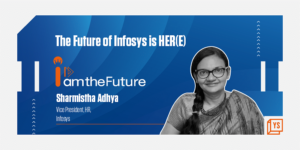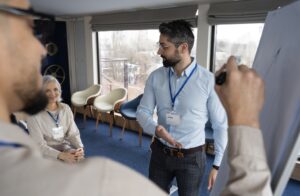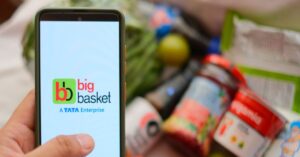Hailing from small-town India, ex-YouTube India chief Amit Agarwal was sure of one thing: education was the key to growth and prosperity.
“My parents themselves hadn’t finished school, so it was all the more important for them to see that my siblings and I got a good education,” he says.
Amit always knew he wanted to do something related to education. During his research, he came across the fact that 95 percent of applicants were not a good fit for industry jobs and most of this was due to the communication skills gap.
“So I thought to myself, ‘What is the best way to fix a language learning gap?’ The answer hit me right away. If we arm children with the right tools from an early age, we can enable smoother learning of a language like English. So, an application made sense to me as I wanted it to be accessible by people everywhere,” he says.
In 2015, this led him to start OckyPocky, an interactive English learning app for children.
Based out of Delhi-NCR, OckyPocky offers key language learning programmes so children “can achieve lasting success with a firm grasp of the English language”. The AI-based platform gives real-time feedback to kids, and makes learning fun and personalised.
The technology facilitates brain and skill development by taking advantage of a child’s natural desire to learn and curating creative courses for learners.
Amit Agarwal, Founder and CEO, OckyPocky
Why English?
A 2015 study titled The National Spoken English Skills Engineers Report showed that a whopping 97 percent of engineering graduates in the country cannot speak English, which is an impediment in landing jobs in corporate sales and business consulting.
As per the study, about 67 percent engineers do not possess spoken or working proficiency in English language, which is required for any job in the knowledge economy.
“Indian schools are falling terribly short on imparting good quality English-medium education. In fact, most government-run schools do not offer English-medium curriculum and the ones that do are merely for showcase purposes. English is the Holy Grail but our teachers struggle with basic grammar and fluency.
With a focus on catering to non-English speaking families, the app is available in Hindi, English, and Marathi. We have also tied up with several kindergartens to help them use the app as an after-school activity or lab tester tool to reinforce classroom concepts in an interactive and fun manner,” Amit says.
About the app
Amit says the team kept the world of children in mind when designing the app interface. “They went the natural and environment-friendly way by including a wooden theme and natural colours,” he says.
The team also thought about the characters that children become so enamoured with. “We did a lot of research and finally came up with an octopus character to connect with children. That’s also how we came up with the name OckyPocky.”
“We then introduced several elements in the app, to provide information that is new to kids and in a way that they find interesting. We cover a lot of local content that represent regions across India. We try to demystify new information for children through interactive means. This way, they not only gain information but learn English as well,” Amit says.
Amit admits that the first product was poorly designed as the content was weak. It took the team over a year to launch open beta as “it was a struggle to build a stable app”.
“Hiring was hard and we tried freelancer to DIY to hire full-time options. Our primary premise wasn’t helping with retention – child safe wasn’t a great thing for Indian parents; they allow open internet to their children,” he says.
The team had to move away from that focus and evolve the product around what users wanted more – measurable success and a gamified UI so that the children would want to learn more.
Rebuild and redesign
This app ran for about three months when the team started redesigning – though that took the team another six months to relaunch.
“We always bet on the Indian language audience gap and tried a multilingual approach. It came easy to us as we teach a language. Our audience was saying happy things, but our data was showing a big disconnect. We had to give them a tool that allow measurable feedback on the learning curve,” Amit says.
The personalisation algorithms needed to evolve as the product catered to several use cases. For example, the top 20 percent of the class where parents wanted the child to compete and excel beyond school, busy parents with no time to supervise, parents in remote towns where no good teachers were available, or the bottom 20 percent of the class.
“We evolved the product across personalisation and stuck to fun learning via gamification. This has created tremendous impact with users in hundreds of cities and towns. We measure very deep data – almost 80 metrics are tracked every day and used for decision making. We back it up with qualitative data based on user conversations. All this goes into design sprints for the next release immediately. Any consistent patterns leading away from desired stickiness, engagement etc leads to a new sprint,” Amit says.
The data push
“We are a very data-obsessed and user-obsessed company – I personally met 1,000+ parents for a 1:1 in their house during the early days. I still supervise our social conversations and we don’t automate that yet,” Amit says.
Amit says he hired from Tier II towns, and being in Delhi, “a lot of the tech team came from Rajasthan-based colleges”.
The first Eureka moment was when they started pedagogy that immediately moved their stickiness 10x with the first major pivot.
“Building a great sticky product is the biggest growth hack. At retention that exceeds anyone else out there, we just grew very fast at frugal budgets. Our UX is optimised for Bharat’s kids i.e. local and vernacular; our tech is made in India and is the very latest in AI and NLP,” he says.
He adds that they learnt a lot about the competition, even though they are market leaders in their niche.
“We track almost everyone for a few days after we hear about them. Mostly, we see great business models but modest product experiences out there. We are a product-first company – so we also study global products and products designed for language learning in different age groups. Some notable ones include Yellow Classes, Kutuki, Stones to Milestones, Utter, Planet Spark, Mastree, and Udayy,” Amit says.
As the team further scales operations, they intend to extend services to all major Indian languages.
Amit says they are trying to build a platform where kids can ask the teacher doubts “whenever they want and however many times they want” – this would be tough in a conventional school environment.
“So, we are in the process of making teachers provide that service to our users. We are also developing the app to understand all types of accents and even lisps through NLP technology,” Amit says.

![You are currently viewing [Product Roadmap] How this former YouTube exec used tech to build an interactive English learning app](https://blog.digitalsevaa.com/wp-content/uploads/2022/02/OckyPocky-1643718705655.jpeg)






![Read more about the article [Funding alert] Online Pharmacy TABLT raises $3M in Series A round from Siti Cable](https://blog.digitalsevaa.com/wp-content/uploads/2021/06/online-medicine-app-1587815624466-300x198.jpg)

